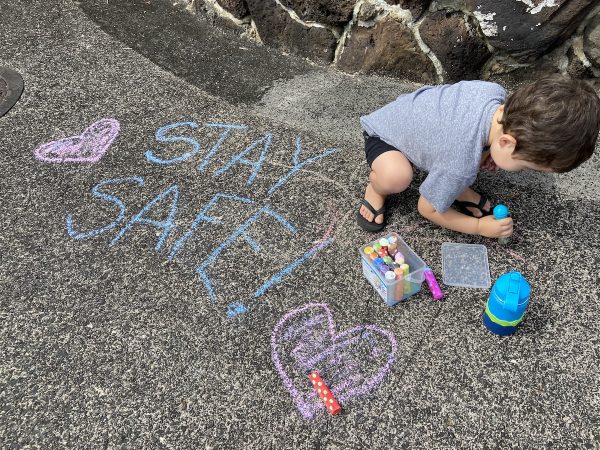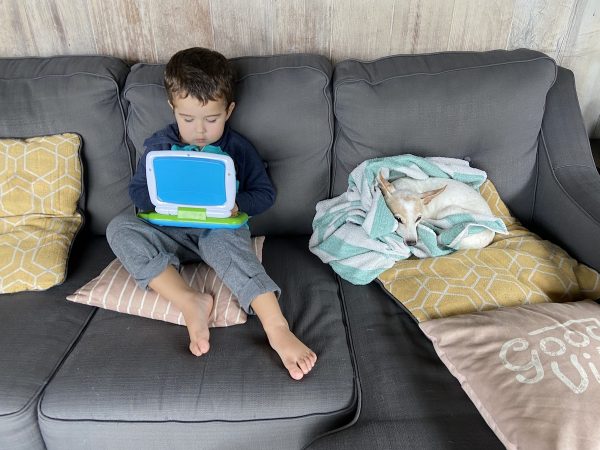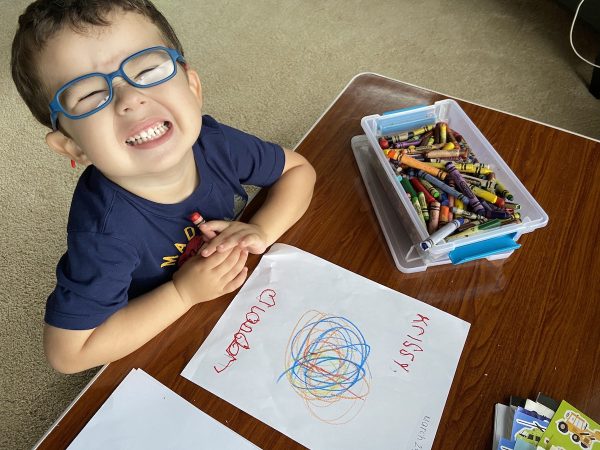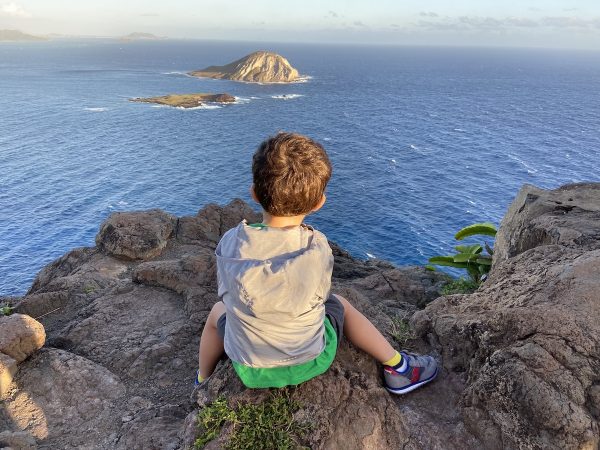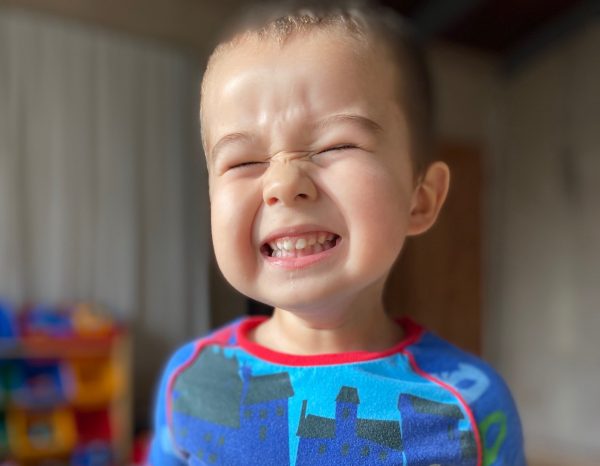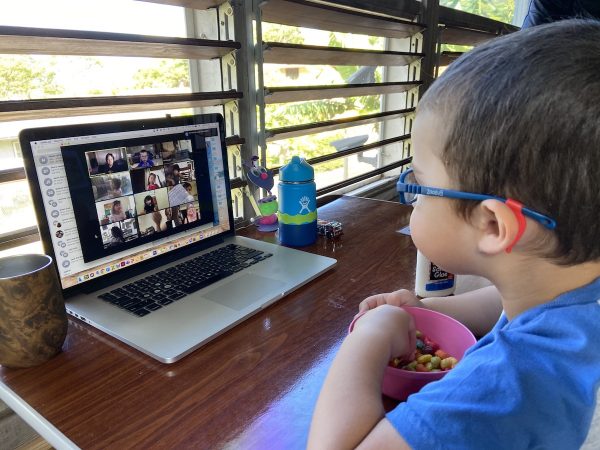
This summer Landon completed his first year of preschool—and man it was interesting.
Not the first part, of course. Up until February 2020, things were fairly typical. He never cried about going to preschool; in fact, his teachers often had to remind him to say goodbye to me. He loved everything about preschool—his awesome teachers (below), the learning, his friends, the playground. Sure, he had his struggles—using an unfamiliar potty, for one, and napping in a room full of kids and other distractions—but for the most part, he thrived. My curly-haired toddler with squeezable cheeks was turning into an actual kid. And though I was thrilled with his growth, I found myself surprisingly sad about seeing my little guy, the one I swaddled and toting around in an Ergo, growing up so fast.
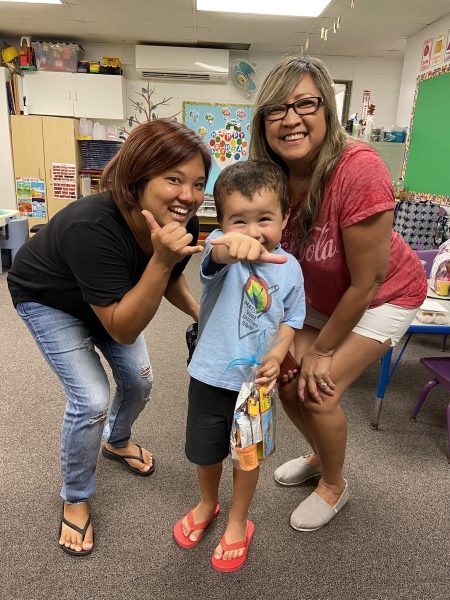
Then March happened.
The spread of COVID-19 forced the closure of our entire state, preschools included. Parents suddenly turned into teachers, and working moms like me turned into crazy people.
I spent the next three months preparing lesson plans and other activities to keep my very active 3-year-old busy from the moment he woke up—5:30 a.m.—until he went to bed at 7 p.m. I spent a lot of money on Amazon and Target, stocking up on crayons, glue sticks, construction paper and something called “dot markers.” I was grossly underprepared. I didn’t have proper kid-friendly scissors or enough stickers to keep him occupied. I needed more of everything—more books, more washable paints, more Play-Doh, more Lego, more puzzles, more snacks, more underwear. It was overwhelming.
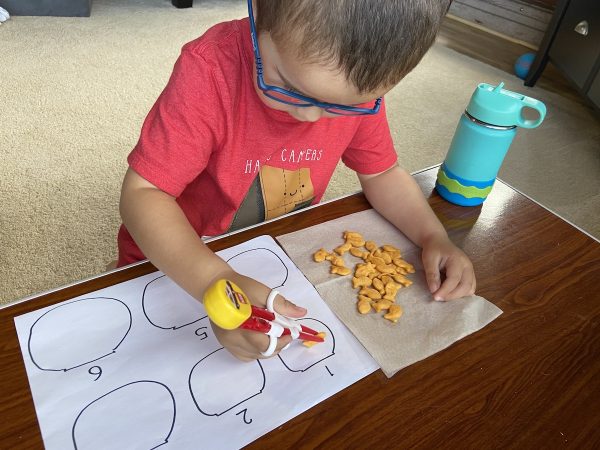
What didn’t help was his inability to focus on anything longer than five minutes. I had to plan the day in 10-minute increments. Ride the tricycle, hop on a scooter, write letters to his friends, help me wash dishes, work on the alphabet, play with Manga Tiles—and it would only be 8 a.m.
And somehow, between cutting up PB&J sandwiches, building spaceships with Lego and bribing him to sit on the potty, I had to work. A regular, 40-hour-a-week job. A job that required Zoom meetings and phone interviews and dedicated blocks of writing and editing time.
OMG.
The only way I could get everything done was to wake up an hour earlier than I normally did—that means 4 a.m.—and working at night after the kid went to bed until my eyes crossed at around 11 p.m.
I did this for months. Even on the weekends. I was at my breaking point.
Thankfully, coronavirus cases in Hawaiʻi, at the time, started to stabilize, enough that preschools reopened for summer. And even that was interesting: Kids had to wear masks, parents had to pack home lunches, teachers had to sterilize everything all the time. The focus was specifically on keeping kids—and teachers—safe. But somehow, our preschool did it—and then some. Landon loved going to school, despite having to wear a mask and try to stay six feet apart from his friends. I honestly don’t even think he noticed the stricter rules. And the teachers managed to make the whole experience fun and enriching. He loved picking out his snacks for his home lunch, he brought home the most amazing artwork, and he often requested to wear his mask at home. I was blown away!
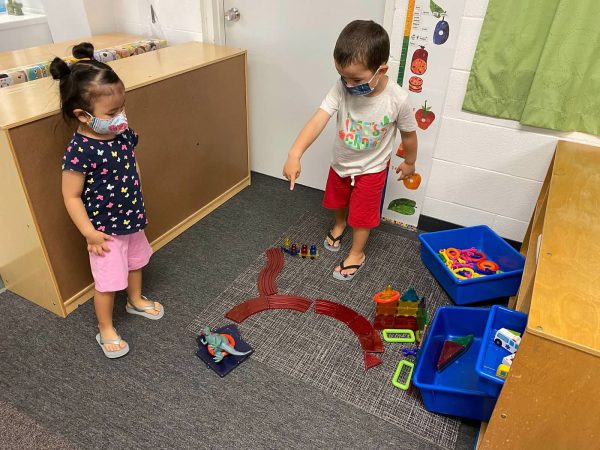
It proved what I’ve always heard about kids: They are resilient—and they’re way more accepting of change than adults are. It’s something we can all learn from.
But here we are, late August, and preschool was supposed to start this week. The first day of school has been postponed because new coronavirus cases are surging in Hawaiʻi with triple-digit cases being reported every day. The state issued its second shutdown since March, with non-essential businesses forced to close again and schools ordered to teach remotely.
And here I am (again), coming up with lesson plans and searching the Internet for free worksheets, dance lessons and activities I can do with a kid who won’t sit still, like, ever.
But if there’s one thing I’ve learned, it’s this: If this kid can do it—and with a smile on his face—then I should be able to do it, too.
Too bad he can’t edit stories. Maybe that’ll be the lesson plan for Thursday.


